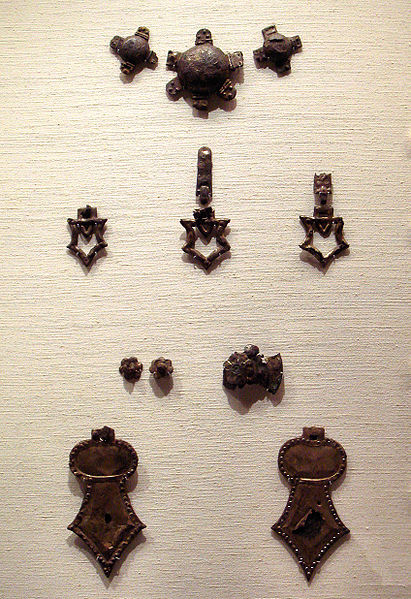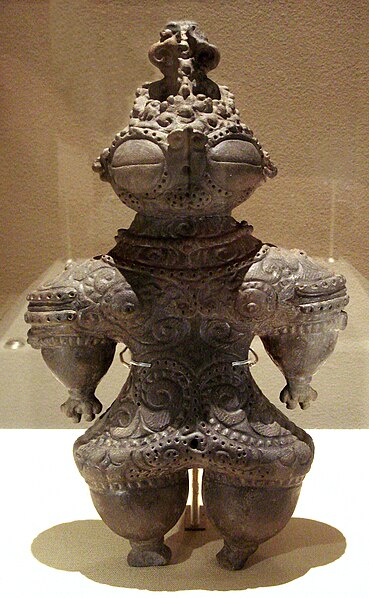The Kofun period is an era in the history of Japan from about 300 to 538 AD, following the Yayoi period. The Kofun and the subsequent Asuka periods are sometimes collectively called the Yamato period. This period is the earliest era of recorded history in Japan, but studies depend heavily on archaeology since the chronology of historical sources tends to be distorted. The word kofun is Japanese for the type of burial mound dating from this era.
Kofun-period jewelry (British Museum)
Iron helmet and armour with gilt bronze decoration, 5th century (Tokyo National Museum)
Gilded sword hilts, late Kofun period, 6th century
Reconstructed Kofun-era warehouse
The first human inhabitants of the Japanese archipelago have been traced to the Paleolithic, around 38–39,000 years ago. The Jōmon period, named after its cord-marked pottery, was followed by the Yayoi period in the first millennium BC when new inventions were introduced from Asia. During this period, the first known written reference to Japan was recorded in the Chinese Book of Han in the first century AD.
Reconstruction of a Jōmon family from the Sannai-Maruyama Site
A vase from the early Jōmon period (11000–7000 BC)
Middle Jōmon vase (2000 BC)
Dogū figurine of the late Jōmon period (1000–400 BC)








